Pete Townshend’s Life House graphic novel hits the book store shelves on 9 January, 2024!
After being included in the epic Who’s Next / Life House box set that came out in September, this beautifully illustrated hardcover book of Pete’s long lost story of Life House is now available as a stand alone release published by Image Comics and Rockbox Studios.
The story is based on Pete’s original scripts he wrote in 1971 and revised in 1978, which he had hoped would be made into a film at the time. Set in a Dystopian future where music has been outlawed, Life House follows a small band of rebels who stage an underground concert in an effort to undermine a tyrannical leader... and free Britain and all of humanity from a grisly fate.
Pete’s original vision of Life House was never fully realized in 1971, but many of the songs he wrote for the story went on Who’s Next, which became one of the greatest rock albums of all time. Pete has revisited Life House a few times over the years, including a BBC Radio play and book of the radio script in 1999, and the amazing Lifehouse Chronicles box set and performances at Sadler's Wells in London that followed in 2000. He also commissioned the Lifehouse Method website in 2007, which was designed to simulate his original Life House concept of creating individual musical portraits based on personalized computer data.
To celebrate the 50th anniversary of Who’s Next, Pete wanted to revisit his Life House story once again, this time in the form of a graphic novel. It was originally slated to be released by Heavy Metal Magazine in 2020 under the helm of Jeff Krelitz with writer/artist James Harvey, who developed the initial story outline and artwork. After a business reshuffle, Krelitz brought in British writer David Hine and Australian artist Max Prentis to complete the project for Rockbox Studios.
“James Harvey (Little Nemo, We Are Robin) had written a very extensive outline, and the first chapter,” Krelitz told Den of Geek, “He was the only person exposed to all the original screenplays and music compiled together. James was able to go through everything and concoct a storyline. He designed the world, design-style, and the look of it. We brought on David Hine, who’s done a volume of books, most recently Spider Man Noir, to complete the script.”
“It’s a colourful, lighthearted, quite comedic in some ways, carefully structured version of the story,” Pete told BBC Scotland, “which really helps to give a solid background to what I set out to try and achieve. Because so much of that was experimental kind of work shop stuff. Now I can conduct experiments, but most of all I think there’s a possibility that Life House one day may be a movie or a TV series.
The rest of the creative team include inking by Mick Gray, lettering by Micah Myers, and editing by Hannah Means-Shannon. The whole crew did an amazing job and the artwork and production quality is fantastic.
Many thanks to Eisner Award winning artist Mick Gray for answering a few of our questions about the Life House graphic novel. He had a lot of insightful things to say about the creative process behind the artwork, so be sure to check out his interview below!
The Life House graphic novel is available in both standard Hardcover and special vegan leather-bound Slipcase Edition. Tower Records also has limited signed editions available on their website that have been autographed by Pete Townshend and Roger Daltrey.
This book is great fun to read, and is a must have collectable item for all Who fans!
Congratulations to Pete Townshend and the creative team at Rockbox Studios and Image Comics!
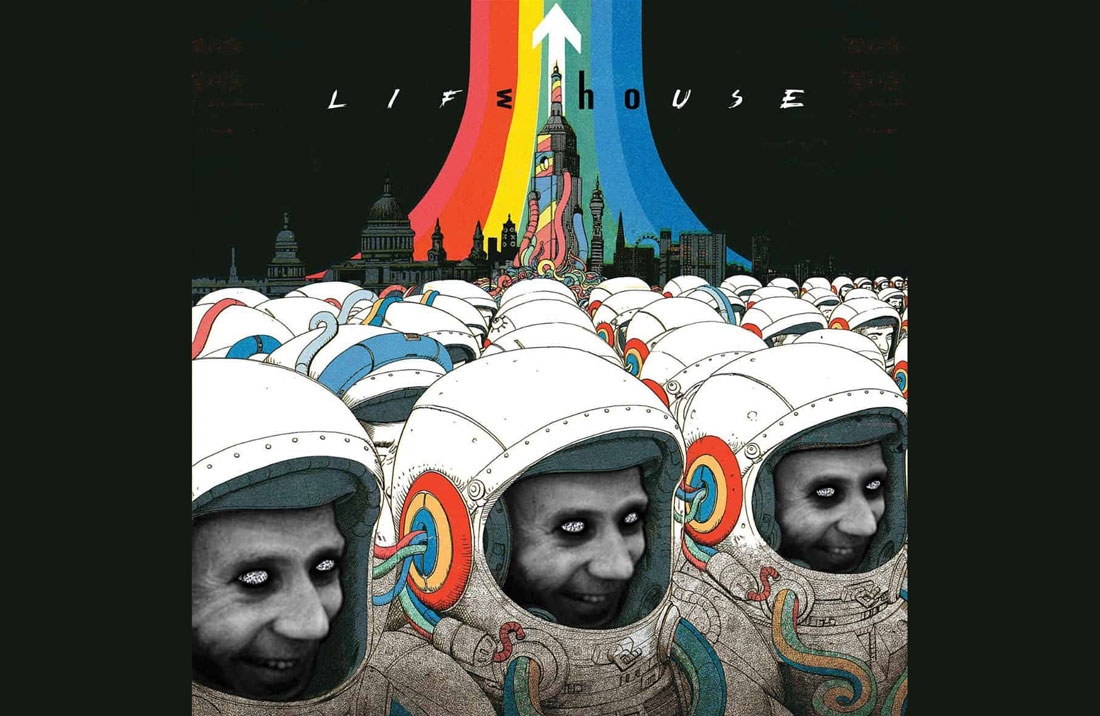 Life House graphic novel cover
Life House graphic novel cover
Exclusive interview with Mick Gray - December 2023
When and how did you become involved with doing the ink work on this project? Did you know about anything about the history of Life House before you got started?
In 2019, I got a call out of the blue by Heavy Metal Magazine, asking if I'd be interested in inking a Pete Townshend graphic novel. After picking my jaw up off the floor, I said YES. I have been a WHO fan since I was sixteen and followed their work, but I wasn't familiar with the Life House rock opera concept. I, of course, knew the "WHO'S NEXT" album like the back of my hand, and became obsessed with researching anything and everything about Life House. I bought the Life House Chronicles box set at that point, and that was my soundtrack as I worked on the project over the next four years.
Can you describe what the inker does, and how important it is for the artwork?
With brushes, pens, and quills the inker's job is to finish off the artwork laid out by the penciller. In doing this we add lightsource as much as possible, which is often not defined with pencil. We can also show depth by separating foreground, middle ground, and background by using different line thickness. But in the case of Life House, the artwork was done one-to-one size, as opposed to most other comic book art, which is blown up to twice the size. In doing this art one-to-one, I had to use very small pens. I think I almost went BLIND in doing this! Brushes were only used for larger figures. Also in the case of Life House, there were two different pencillers and my job was to keep the linework of the 170 pages consistent.
Were you involved in the early stages of the project and work on James Harvey’s original graphics?
Yes. I inked all of James Harvey's traditional pencil art. Later I inked Max Prentis' digital pencils. But all my inks are traditional, ink on paper, as opposed to digital. I don't do digital inking.
What is the artistic process of producing a graphic novel? Can you describe the collaboration that took place between the creative team members during the production?
Generally there are five or six people working as a team: editor, writer, penciller, inker, colorist, and letterer. On Life House the original writer James Harvey consolidated all of Pete Townshend's scripts down to one usable treatment, with lots of collaboration between them. After that, Pete was pretty much out of the loop and James took the reins as penciller for the first 70 or so pages. When James left the project, Max Prentiss was brought on and continued as penciller for the remainder of the book. David Hines was brought on to write dialogue and massage the story further. In the end there were problems getting the colors done and Max saved the day again by taking over that job, too. Most likely the last steps were digitally adding the lettering, by Micah Myers, and editing the complete mess together into a wonderful finished product by the fabulous Hannah Means-Shannon.
Did you get a chance to read Pete Townshend’s original Life House scripts? How closely does the graphic novel stick to his story?
I did get to read James Harvey's treatment of all the combined scripts. I also read Pete's 1997 Life House script that he wrote with Jeff Young. But James Harvey, when working with Pete, asked him for his most important aspects of all the scripts. The story is so complex there's no way to tell you which aspects came from where and how they each differed.
Did Pete provide any feedback and guidance regarding the writing or artwork during the production of the book?
His feedback was in the script. As far as artwork, Pete probably approved early character studies.
Do you know if there is any difference between the graphic novel that was included in the Who's Next box set, and this version that Image is releasing?
I think there will be MINOR fixes/changes to color or dialogue, maybe... but nothing MAJOR!
AND .. the special fancy faux leather cover SPECIAL edition, of course!
The artwork is spectacular throughout the book and the finished product is extremely high quality. How was your experience working on a major project like this?
It was stressful, but most comic book projects are because of the deadlines. Almost two years went by in the middle of the project where multiple problems arose, making it so we couldn't even work on it. So I kept turning down jobs, waiting for this project to get back on track. This was probably the biggest, most important project of my comic book inking career. I dropped everything for four years just to work on this book. I turned down so much work I probably lost all my comic book connections. But as far as I'm concerned that was okay because I was working on my "swan song". If I never work on another comic book project in my life, I'm happy my career ended with Life House.
Now my only goal is to meet Pete in person. I want to shake his hand and thank him for allowing me to be part of music history.
The question I have is will this graphic novel be the storyboard for the movie adaptation???
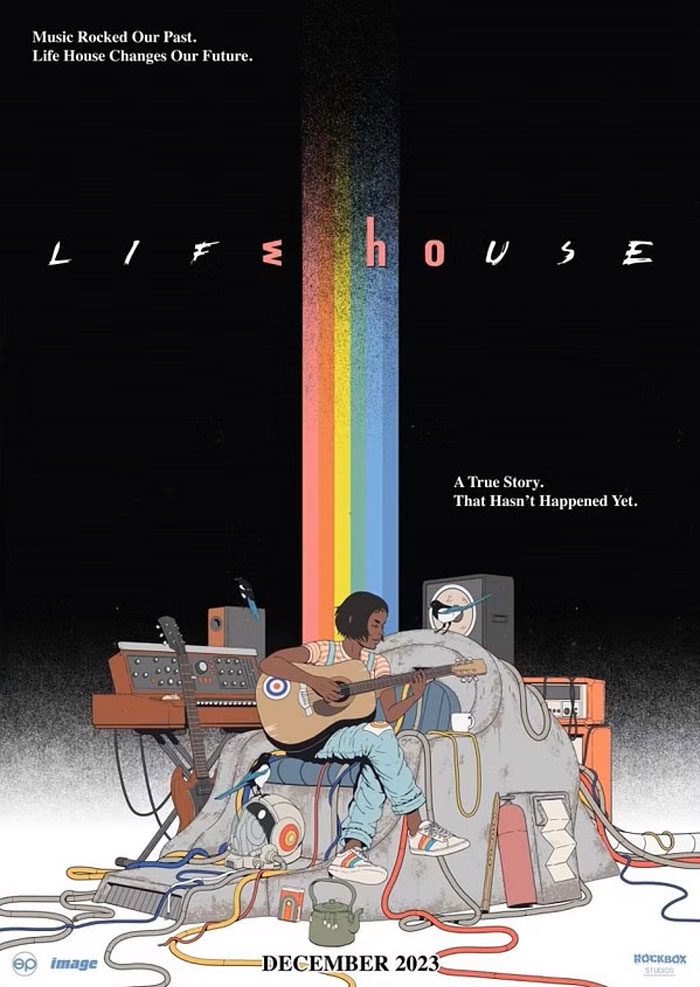 Promotional poster for Life House graphic novel
Promotional poster for Life House graphic novel
Press release statements from Pete Townshend and Life House graphic novel team
Pete Townshend: “Life House has always needed a story that makes sense but without the egos of new creatives who think they can ‘fix’ what was wrong with my first draft. The graphic novel is built around that first draft written prior to recording sessions and workshops at the Young Vic in 1971. A second draft with some good ideas from Roger in 1976 added some cohesion and more exciting collateral which really suits the comic format. The art is beautiful and dense, colourful of course and engaging. The artists and their team have made an amazing and hugely collectible piece that adds depth and clarity to an otherwise complex story. I’m delighted with the comic. Life House is reborn!”
Jeff Krelitz, CEO of RockBox Studios: “Helping Pete to advance his epic vision for Life House has been a dream come true. Assembling and working with a team of unbelievably talented creators to help bring this project to life has been even more rewarding. If you’re a fan of The Who, or even just a fan of great science fiction, you’ll find a new home in Pete Townshend's Life House.”
David Hine, writer: “Working on Life House has been one of the most rewarding experiences of my career in comics. The challenge was to finally realize Pete Townshend’s visionary story of a sound that transcends human fallibility and unifies all human consciousness, and along the way to create a page-turning thriller with mind-blowing visuals. The artists on this book have performed like your dream supergroup.”
Max Prentis, artist: “Being part of the creation of such a prolific comic has been exciting and challenging. This is my first comic I've worked on, so it was a steep learning curve; it was truly being thrown in the deep end, but with the experience of Mick, Hannah, and David, it felt like a swim. Making and finishing a part of Pete's original idea from five decades ago and being part of such a monumental piece has made me feel we've really accomplished something big here.”
Eric Stephenson, Publisher and Chief Creative Officer at Image Comics: “Growing up, The Who were one of my favorite bands, and 'Who’s Next' definitely loomed large in their discography as a major touchstone. From 'Tommy' to 'Who’s Next' to 'Quadrophenia,' Pete Townshend has always not only distinguished himself as one of rock’s most ambitious songwriters, but also a natural storyteller, so it’s both a pleasure and a thrill to see one of his most legendary projects take on a new life as a graphic novel. Anyone who has been a fan of Pete and 'The Who' for as long as I have is well-versed in the history of 'Lifehouse' and how it became 'Who’s Next,' so helping to finally get Pete's story into people’s hands is nothing short of incredible."
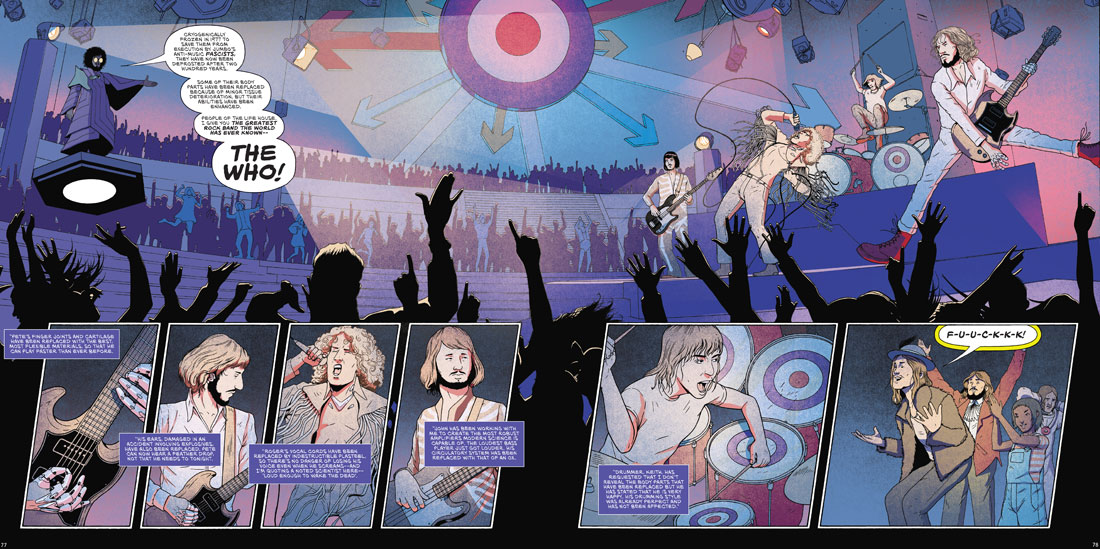 Page from Life House graphic novel
Page from Life House graphic novel
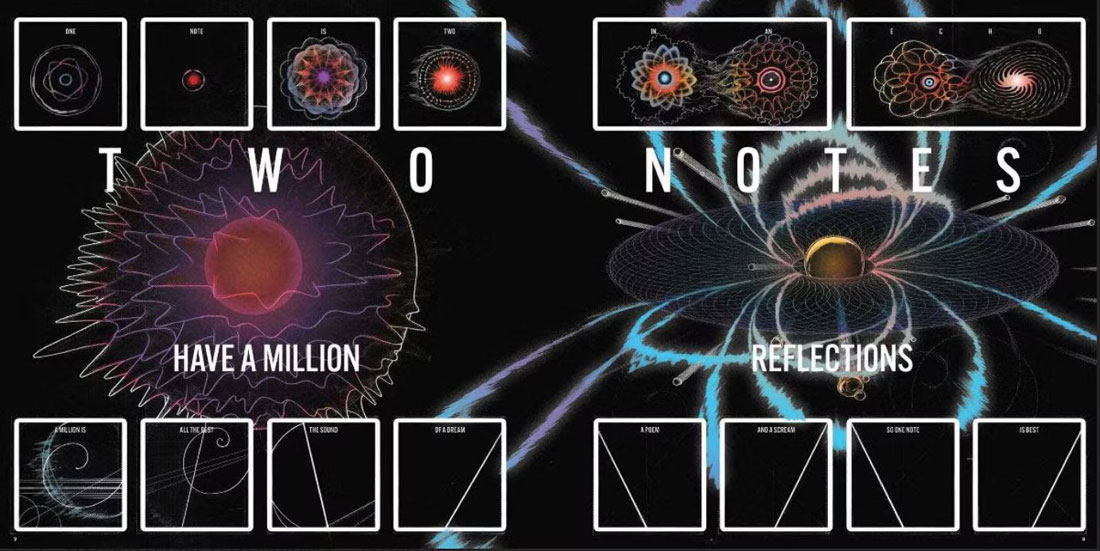 Page from Life House graphic novel
Page from Life House graphic novel
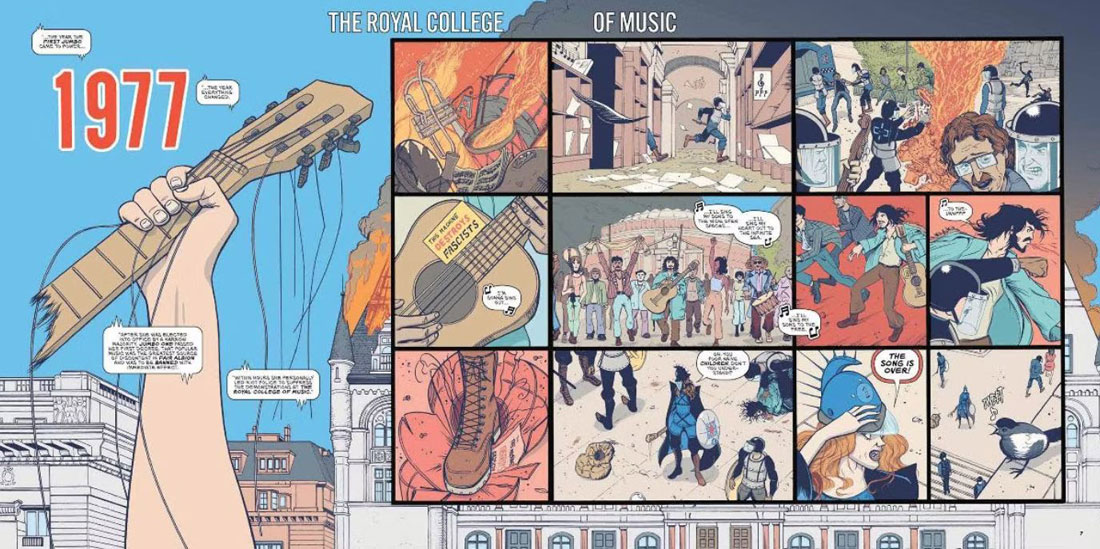 Page from Life House graphic novel
Page from Life House graphic novel
